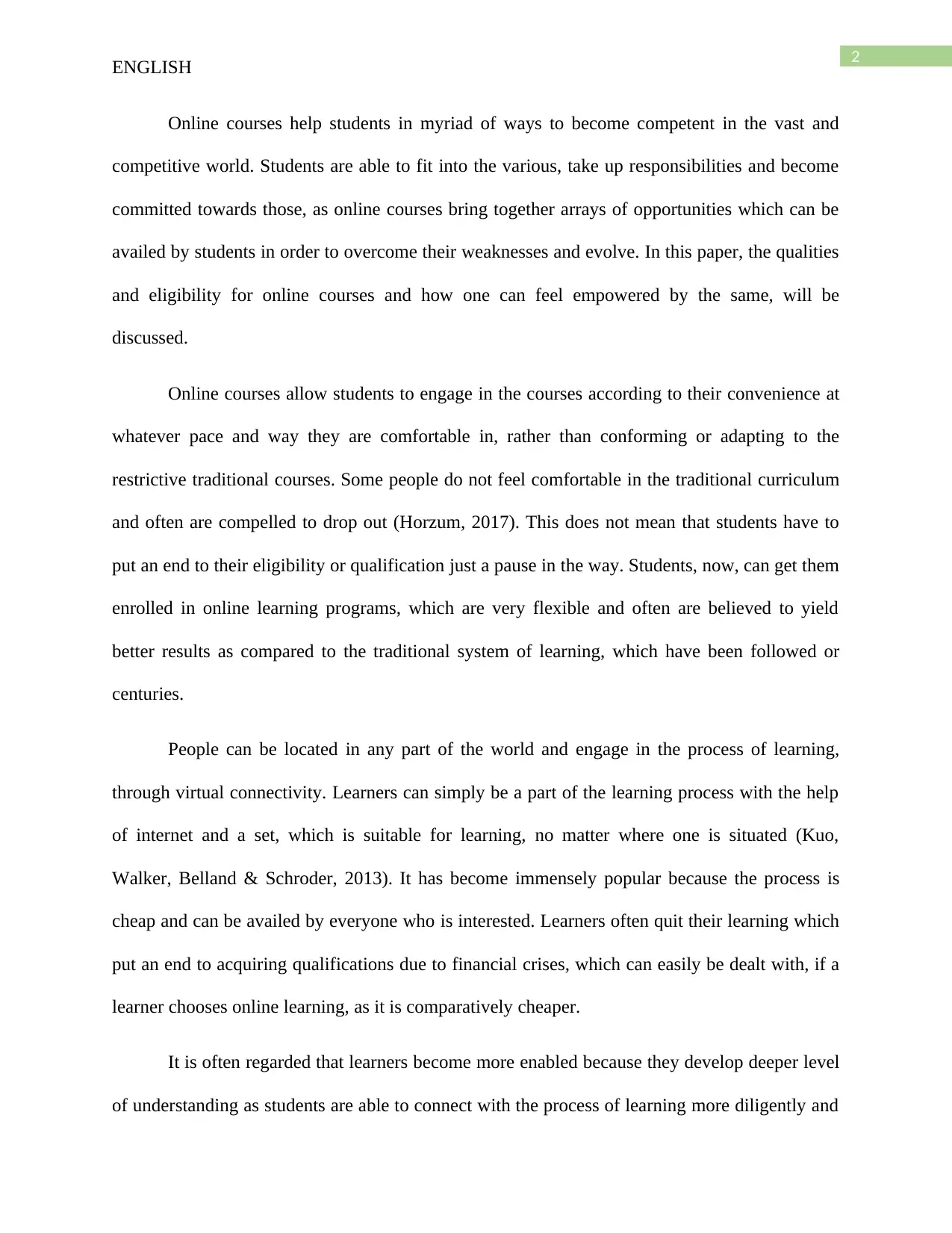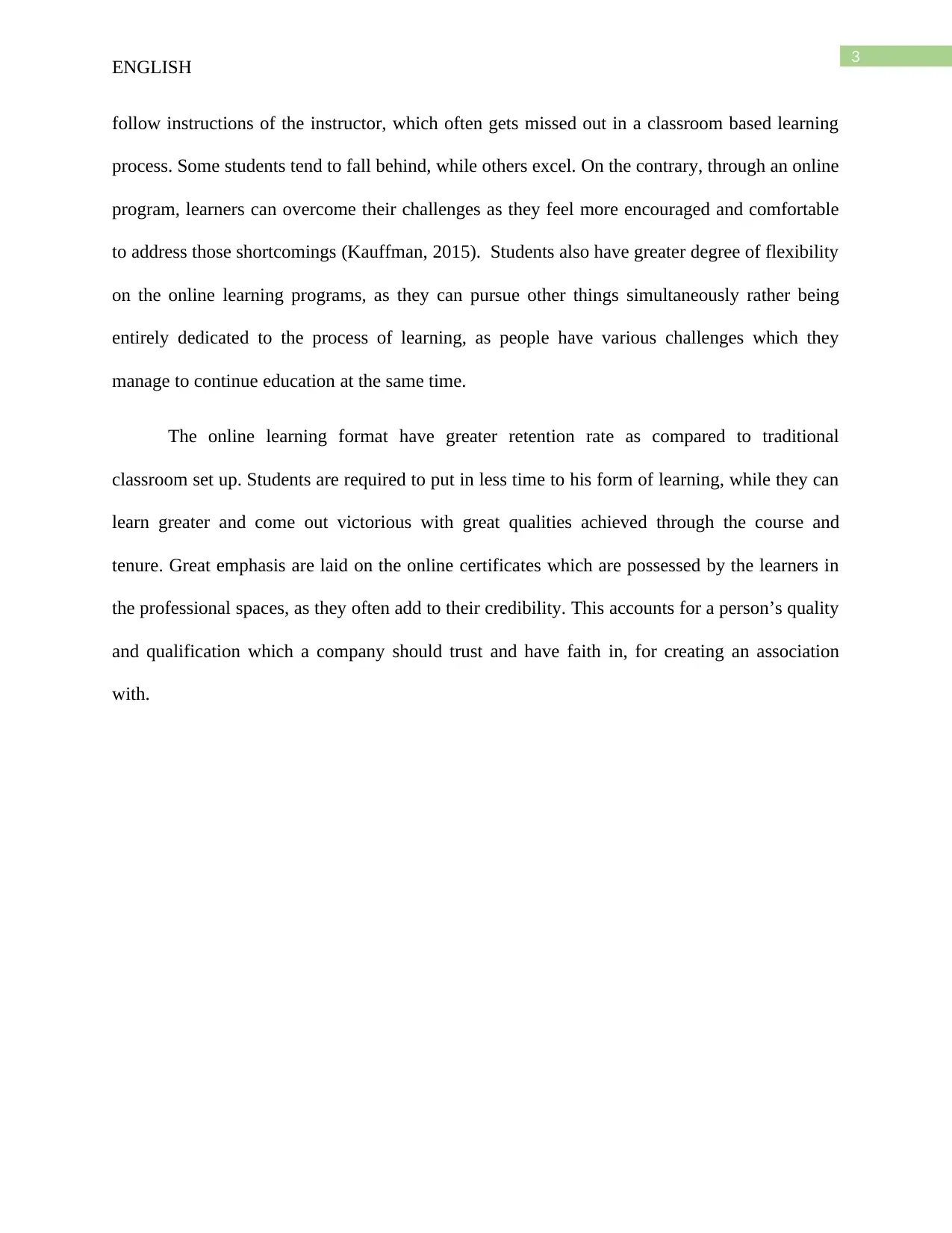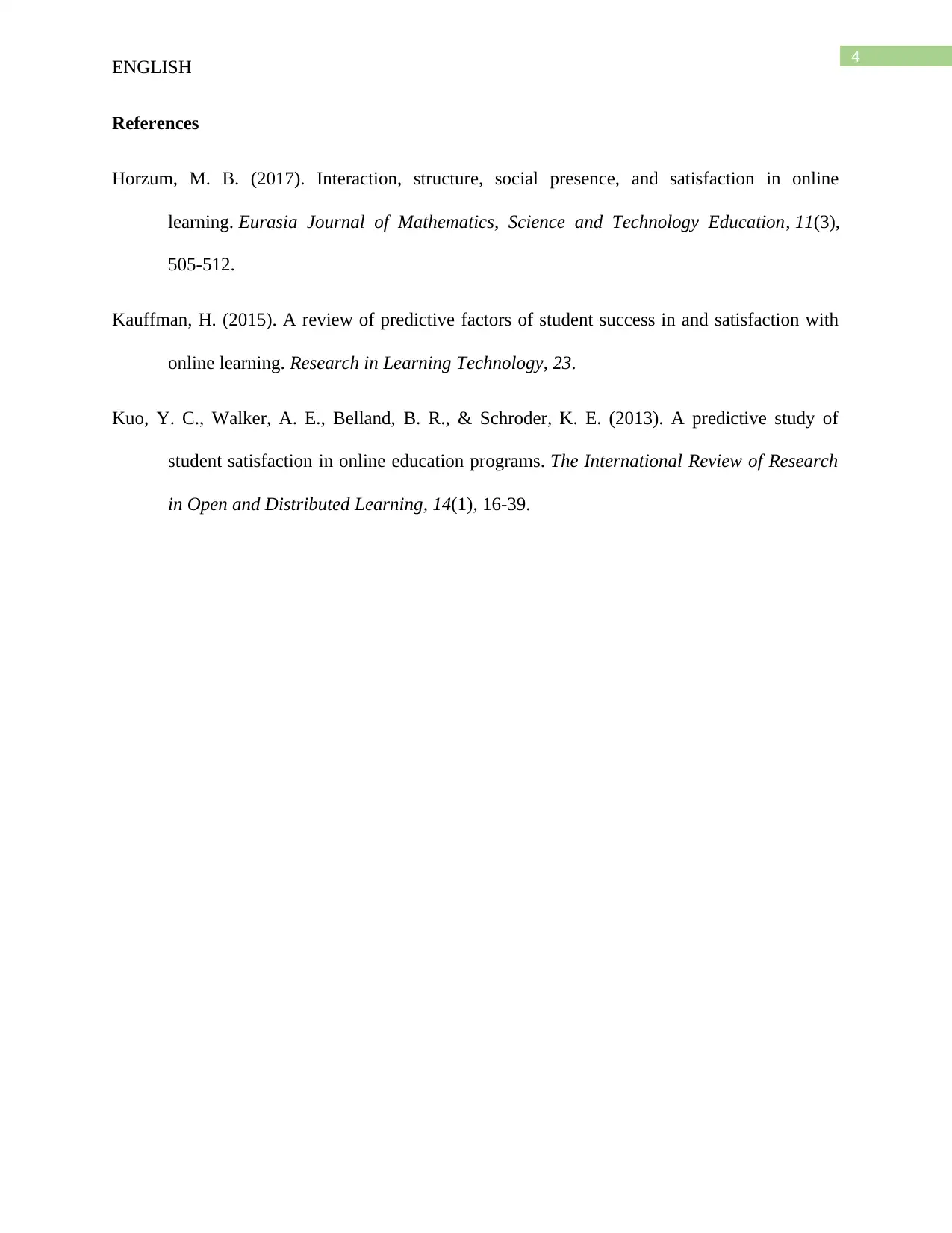Online Courses: Advantages, Eligibility, and Empowerment for Students
VerifiedAdded on 2022/09/16
|4
|706
|35
Essay
AI Summary
This essay examines the advantages of online courses, highlighting their flexibility and accessibility. It discusses how online learning empowers students by providing them with the ability to learn at their own pace and overcome challenges. The essay emphasizes the eligibility of students for online programs, addressing how they can overcome limitations and acquire qualifications. It also touches upon the benefits of online learning, such as greater retention rates and the importance of online certificates in professional settings. The essay references several studies to support its claims, including the impact of interaction, structure, and social presence in online learning, predictive factors of student success, and student satisfaction in online education programs. Overall, the essay provides a comprehensive overview of the positive impacts of online courses on students' learning experiences and career prospects.
1 out of 4










![[object Object]](/_next/static/media/star-bottom.7253800d.svg)